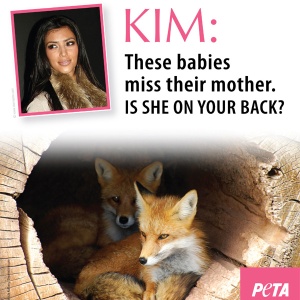The Definition Stasis
Let’s pretend that you’re writing an argumentative essay about animal cruelty and its relation to the practice of wearing animal fur.
In order to make a good-quality argument–to determine credibly whether or in what situations wearing fur counts as animal cruelty–this paper would want to look at multiple examples of fur-wearing practices. Essentially, the goal would be to think about whether each of these examples meets the criteria of animal cruelty–and in the process, after interpreting those various examples, this paper would arrive at a conclusion about what the threshold is at which wearing fur becomes animal cruelty.
In order to do that, however, we would need to establish with our reader what animal cruelty is in the first place.
To start, we might scour the internet and UM-Dearborn library to do some research into animal cruelty laws. Some research questions guiding our search might be the following: Is there a national, federal definition of what counts as animal cruelty, i.e. according to federal law? Does the definition of animal cruelty (i.e. of what’s prosecutable as animal cruelty) change from state to state as a consequence of different state laws? Are there other contexts–besides the legal context–where we could look to discern the criteria people use to define animal cruelty?
To this end, get into groups of at least two people and, using the internet or any knowledge you already have, discover at least three criteria for what counts as animal cruelty. You can derive these criteria from (federal or state laws, or possibly even from sources of a non-legal nature (e.g. philosophy/ethics). Work with purpose–you have 15 minutes. Write these down (I won’t be collecting them, but I will be asking your group to contribute.
Something counts as animal cruelty when it involves the following:
2.
3.
4.
5.
Now that we’ve got a basic working definition of animal cruelty (not a perfect definition, maybe, but one that can help us get our argument going, and one which we could return to and revise later), let’s see whether some particular examples match these criteria.
| Animal cruelty (broader category) | Kim wearing fur (particular example) |
| A) | A) |
| B) | B) |
| C) | C) |
| D) | D) |
But what about this example?
| Animal Cruelty (broader category) | Native American wearing fur (main term) |
| A) | A) |
| B) | B) |
| C) | C) |
| D) | D) |
The Evaluation Stasis
Much like definitional arguments (“Is X a Y?”), evaluations also involve a criteria-match structure. In this case, however, you are not providing the criteria that a thing must meet to be defined in a category, but rather the criteria it must meet to be evaluated as a “good” or “bad” instance of whatever category it already belongs to.
There are three types of evaluation criteria:
- Practicality: Is something practical or impractical? Useful or useless? Feasible to implement, or unfeasible to implement? Possible and realistic, or impossible and unrealistic?
- Aesthetics: Is something beautiful or ugly? What kind of image does it send out to the world–is that image good/beneficial/constructive or bad/harmful/dangerous?
- Ethics: Is something right or wrong, just or unjust, fair or unfair, moral or immoral?
Example: NASA sending humans into space
Evaluate in terms of…
Practicality:
Aesthetics:
Ethics:
Think back to our two “is wearing fur animal cruelty” examples:
Practicality:
Aesthetics:
Ethics:
versus
Practicality:
Aesthetics:
Ethics:




